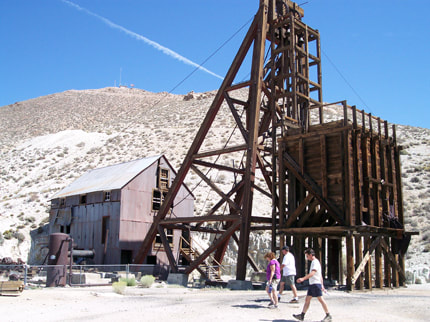Prepare to get your boots dusty (or wear hiking gaiters) as you wander as much of the 110-acre park as you care to cover. You’ll find a vast display of restored and preserved mining equipment as well as original structures—a grizzly (ore sorting house), an assay lab, the last remaining trestle from the Tonopah & Goldfield Railroad, hoist houses with all original equipment, and head frames. These are not “pretty” museum exhibits. They are safe to explore, but definitely sitting in a state of weathered decay. Take the underground burro tunnel that leads to a steel viewing cage suspended over a 500-foot mine stope (vertical shaft). Surrounded by such a vast amount of authentic mining artifacts, you won’t need much imagination to get a real sense of what it was like to work in a turn-of-the-century silver mine! Before you poke around the remnants of the Mizpah Mine, Silver Top Mine, Desert Queen, and others, watch the introductory video inside the visitor center. You’ll “meet” Jim Butler and his wife Belle, and learn why Tonopah's mines were consistently high producers. Their biggest year was 1913 when almost $10 million in gold, silver, copper and lead was pulled out of the ground. Tonopah Historic Mining Park has been voted “Best Museum in Rural Nevada.” You won’t be disappointed if you, too, take a self-guided walk in the footsteps of the old-time silver miners. And you won't lose anything to one-armed bandits!Comments are closed.
|
RAZER GAITERS

 RSS Feed
RSS Feed
